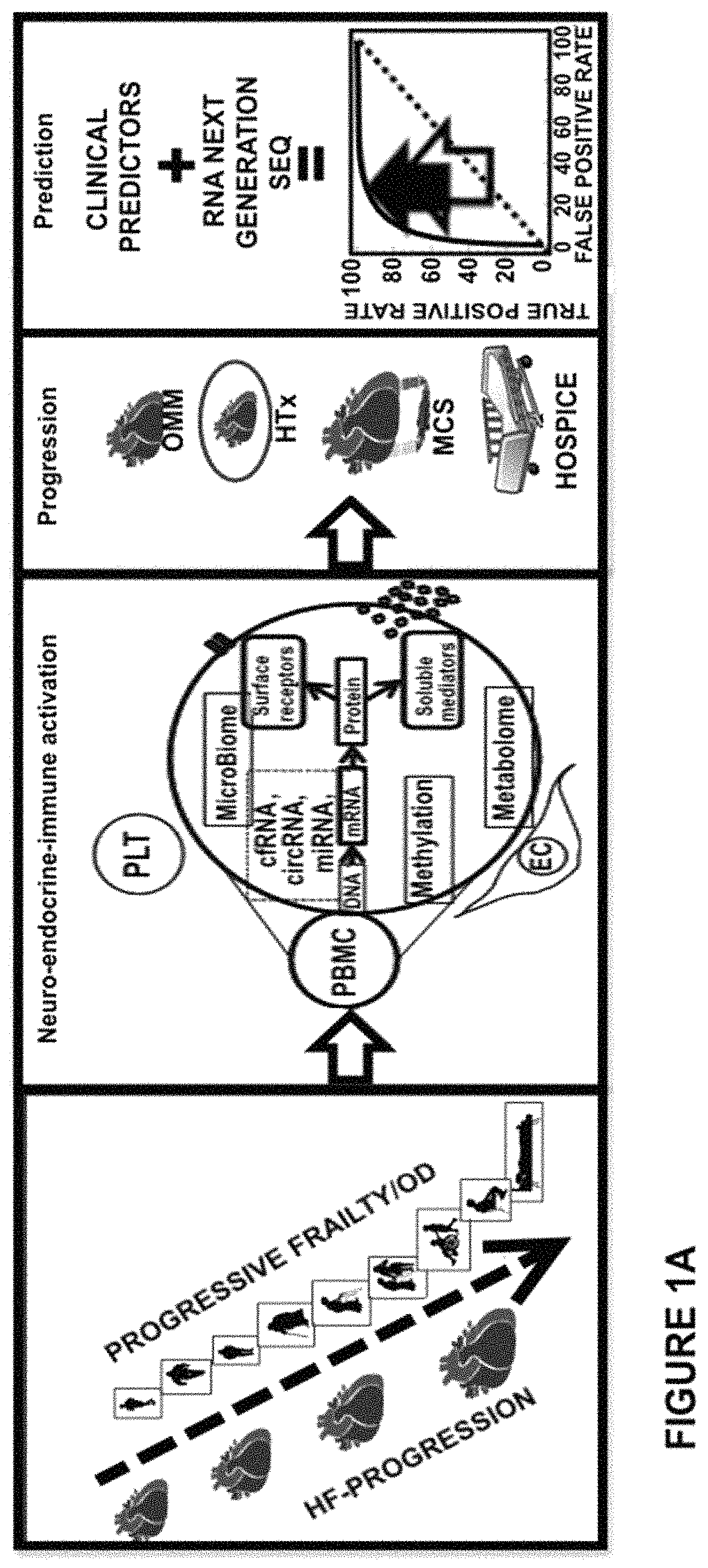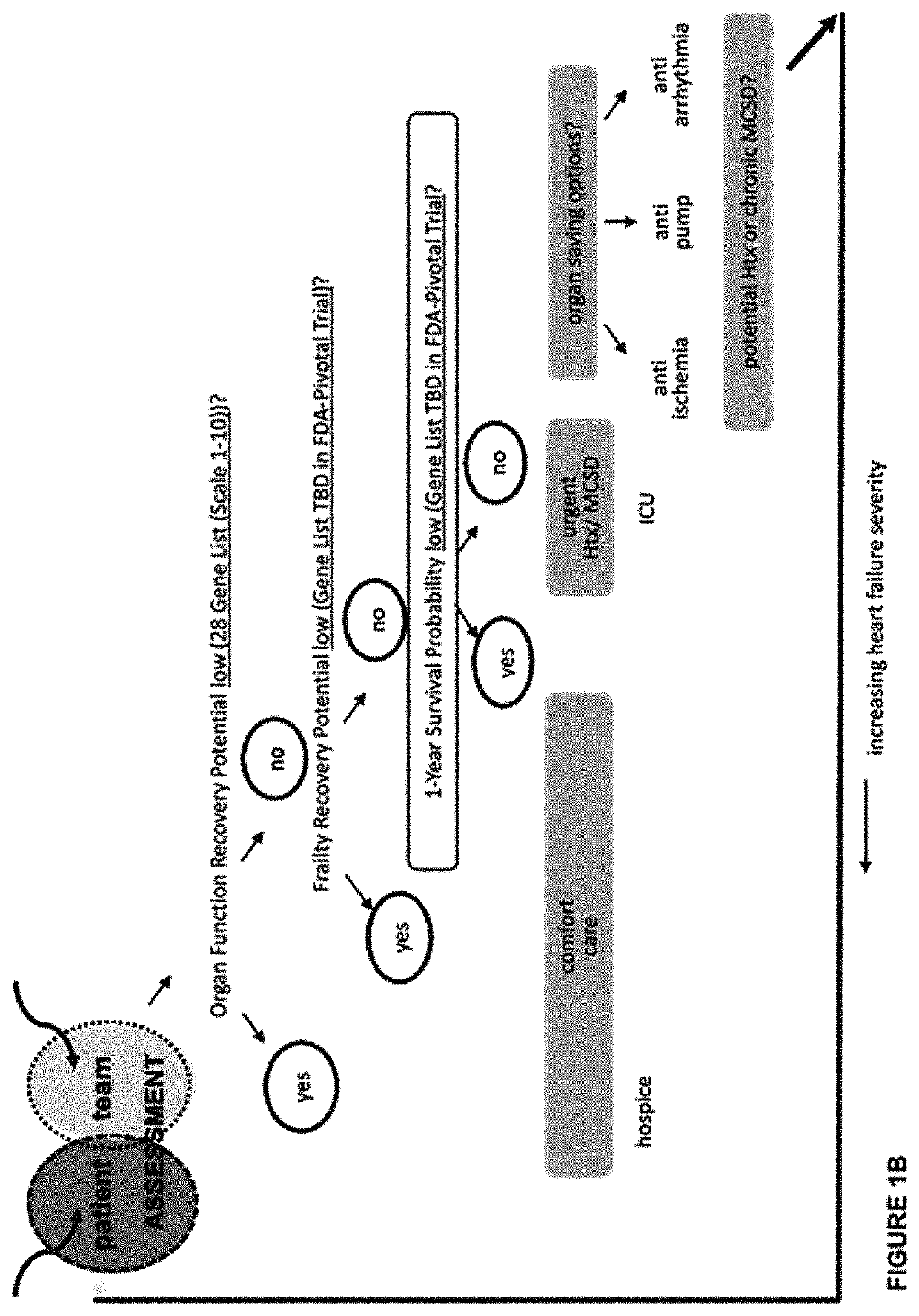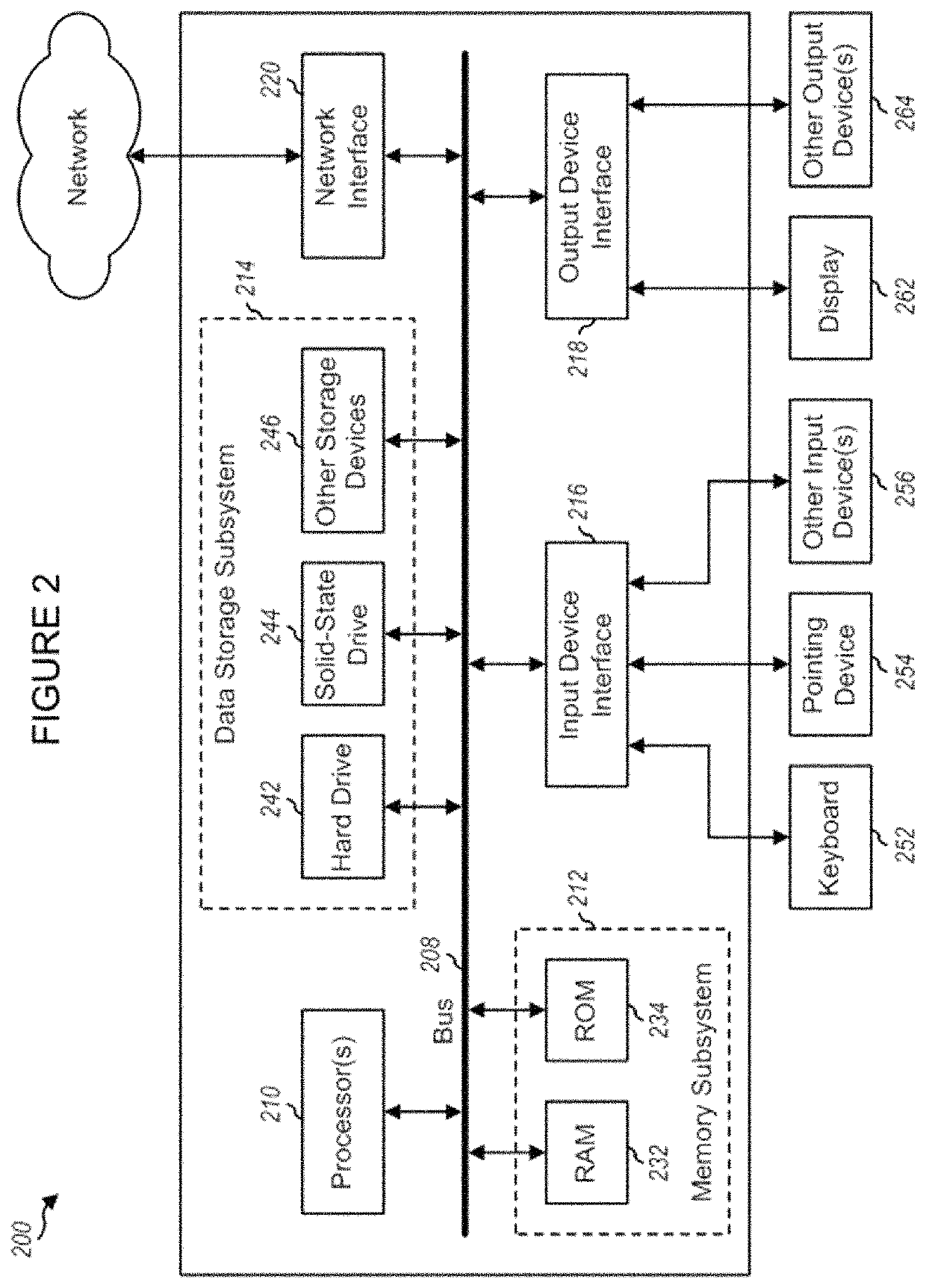Assay for pre-operative prediction of organ function recovery
a pre-operative and organ technology, applied in the direction of microbiological testing/measurement, biochemistry apparatus and processes, etc., can solve the problem that the survival benefit of these surgical/interventional therapeutic interventions is not as well established
- Summary
- Abstract
- Description
- Claims
- Application Information
AI Technical Summary
Benefits of technology
Problems solved by technology
Method used
Image
Examples
example 1
on Between Preoperative PBMC Gene Expression Profiles, Early Postoperative Organ Function Recovery Potential, and Long-Term Survival in Advanced Hearth Failure Patients Undergoing Mechanical Circulatory Support
[0102]This Example demonstrates that preoperative PBMC-GEP predicts early changes in organ function scores and correlates with long-term outcomes in AdHF patients following MCS implantation. Therefore, gene expression lends itself to outcome prediction and warrants further studies in larger longitudinal cohorts.
[0103]Heart failure (HF) is a complex clinical syndrome that results from any structural or functional cardiovascular disorder causing a mismatch between demand and supply of oxygenated blood and consecutive failure of the body's organs. In the United States, HF affects about 6 million persons [1]. HF with reduced ejection fraction (HFrEF) affects 3 million people [2]. The lifetime risk of developing HF for men and women older than 40 years of age is 1 in 5. The death r...
example 2
l Blood Transcriptome Biomarker Test to Diagnose Functional Recovery Potential in Advanced Heart Failure
[0253]This Example illustrates the outcome prediction obtained by use of the Functional Recovery Potential (FRP), which refers to the potential to recover from stressors based on chronological age and multiple other factors, including primary and secondary organ failure, comorbidities, frailty, disabilities.
[0254]Heart failure (HF) is a complex clinical syndrome that results from any structural or functional cardiovascular disorder that causes systemic hypoperfusion and failure to meet the body's metabolic demands. HF is initiated by various myocardial injury mechanisms. Despite chronic neurohormonal upregulation in order to maintain a compensated state, further myocardial injury leads to HF progression, resulting in overall catabolic / anabolic imbalance, secondary organ dysfunction, cardiac cachexia, iron deficiency anemia, and frailty[3]. This triggers immune system activation wh...
example 3
ies Show Predictive Value of FRP Scoring
[0289]This Example demonstrates the advantages achieved using the predictive value of the FRP scoring. Two case studies out of the 29 AdHF-patients in the Proof-Of-Concept Study illustrate the clinical utility of FRP scoring. Case Study #1 (FIG. 8): MH, a 69-year-old woman, born in 1942, married, who was in the 1970's diagnosed with Dilated Cardiomyopathy, had a “heart attack” in the 1990's, underwent Implantable Cardioverter-Defibrillator (ICD) implantation and Biventricular Pacemaker Implantation (BVPM) 1999, had a history of Monoclonal Gammopathy of Unknown Significance (MGUS), Diabetes Mellitus (DM) and hypothyroidism. In 2012, she suffered a cardiac arrest, developed renal dysfunction and was hospitalized three times in 12 months for heart failure decompensation. In July 2012, she was admitted to UCLA in cardiogenic shock and multiorgan dysfunction (liver, kidneys, lung, immune system). The AdHF-team was uncertain, but felt that she was l...
PUM
| Property | Measurement | Unit |
|---|---|---|
| temperature | aaaaa | aaaaa |
| concentration | aaaaa | aaaaa |
| size | aaaaa | aaaaa |
Abstract
Description
Claims
Application Information
 Login to View More
Login to View More - R&D
- Intellectual Property
- Life Sciences
- Materials
- Tech Scout
- Unparalleled Data Quality
- Higher Quality Content
- 60% Fewer Hallucinations
Browse by: Latest US Patents, China's latest patents, Technical Efficacy Thesaurus, Application Domain, Technology Topic, Popular Technical Reports.
© 2025 PatSnap. All rights reserved.Legal|Privacy policy|Modern Slavery Act Transparency Statement|Sitemap|About US| Contact US: help@patsnap.com



